Do gohan no otomo, Japan’s traditional easy white rice toppings, work with toast?【SoraKitchen】
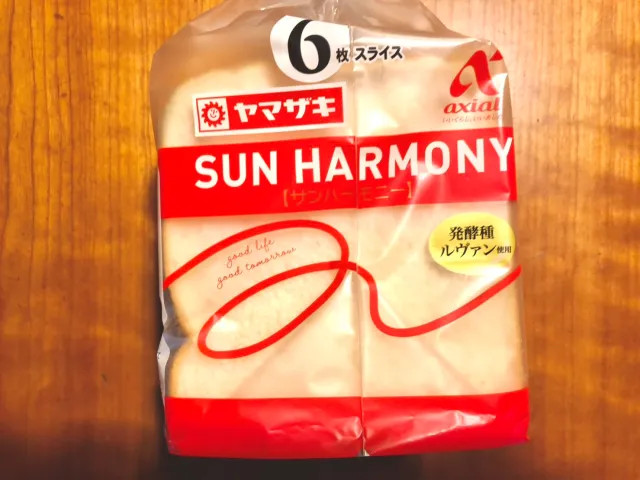
Exploring the culinary boundaries of bread.
When you have toast for breakfast, what do you put on it? Many people would answer jam and butter, or maybe a spread of peanut butter or even avocado.
But we were curious to see what would happen when we paired toast with the traditional Japanese rice toppings called gohan no otomo.
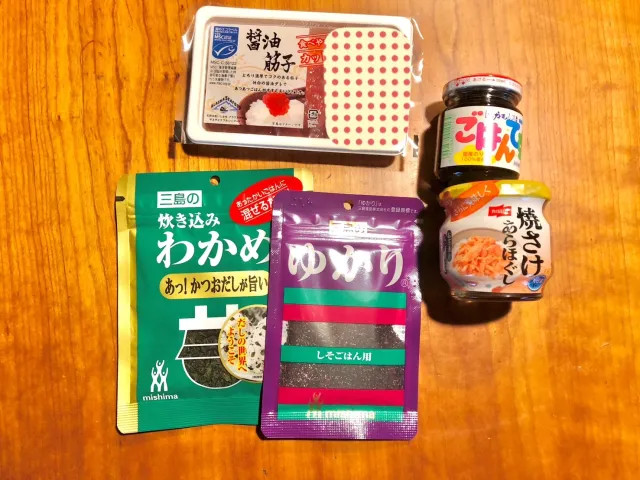
Gohan no otomo translates as “rice companions,” and it refers to quick, pre-made toppings designed to be sprinkled on a bowl of white rice to easily and inexpensively spruce it up into something more flavorful and substantial, and they’re especially handy to have at breakfast.
For this test, our gohan no tomo lineup consisted of salted salmon roe, salmon flakes, red perilla flakes, brown seaweed flakes, and seaweed broiled in sweetened soy sauce. These are all things that go wonderfully with rice, but we had no idea how they would pair with toast.
We were most curious about the salted salmon roe, so we started with that. Though you’ll sometimes see spicy cod roe served on French bread in Japan, we’d never heard of anyone using salted salmon roe as a toast topping, so we were very intrigued about how it would taste.

Oddly, when we slathered it on a slice, it looked a bit like strawberry jam before we covered it with the other slice to make a sandwich. The bright red of the roe was a picturesque vision against the white toast. We didn’t think it looked strange at all, which was unexpected.
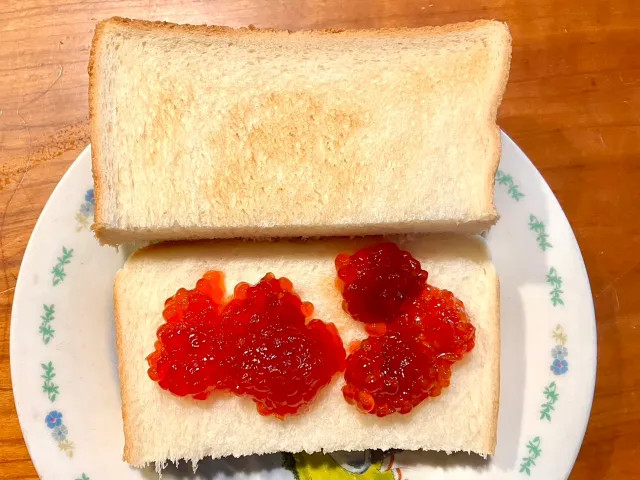
The big question, though, was what it would taste like. We’ve eaten toast and salted salmon roe separately a countless number of times, but never at the same time. As we lifted the toast sandwich to our lips, we couldn’t suppress the feeling that we were about to step into an unknown world.
Ooh, it was surprisingly not weird! We’d put enough salted salmon roe on the toast that we could really taste its salty-sweet flavor. In contrast, the flavor of the bread was much more reserved. As we chewed, we gradually got a sense of the bread’s natural sweetness, but the richness of the roe was what took center stage.
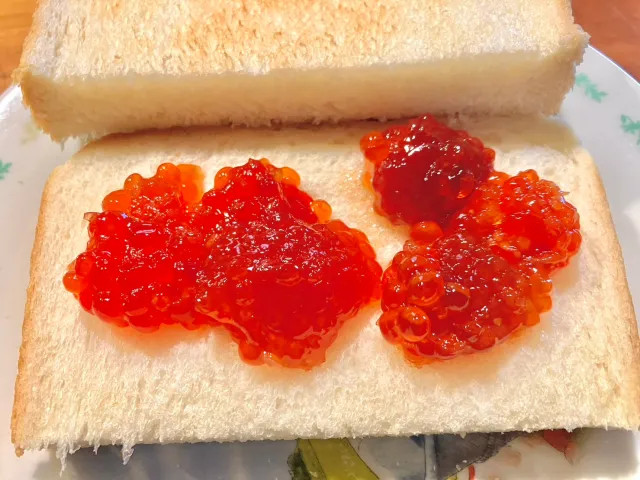
Since the toast has lots of surface area to cover with the salmon roe, we think this is an even better way to enjoy it than over rice. If you’re a salted salmon roe fan, you might try it in a sandwich and see how you like it!
Next we tried dried flakes of brown seaweed. We love to mix it in with rice, but how about on toast? It might be a bit too salty to pair with bread.

We sprinkled it liberally on a slice and covered it with another, then lifted it towards our lips…
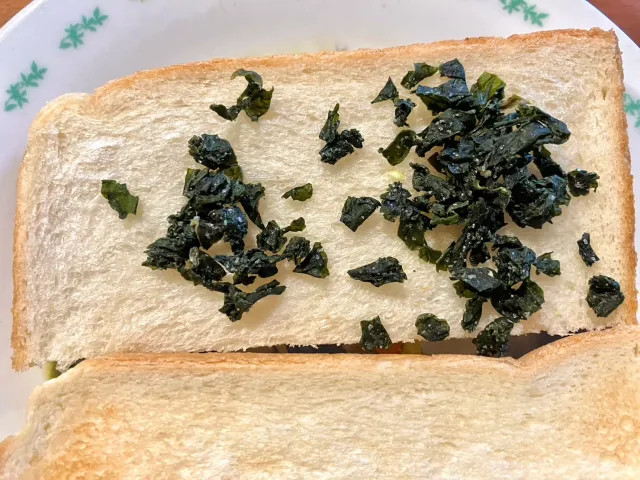
It all came crumbling out from between the slices! Oh no. It was definitely not the kind of toast sandwich you can eat elegantly; we had to really press the slices shut to keep it inside. We were glad we made the effort to get a plate.

Once we managed to find a good way to eat it, though, the flavor surprised us. The toast ended up serving as a buffer to the seaweed flakes, so its super saltiness didn’t hit our tongues directly. The flakes drew out the salt content of the bread, but we couldn’t really get the flavor of the seaweed, which is much more prominent with rice.
We decided to try the dried salted red perilla flakes next, also known as red shiso in Japanese.
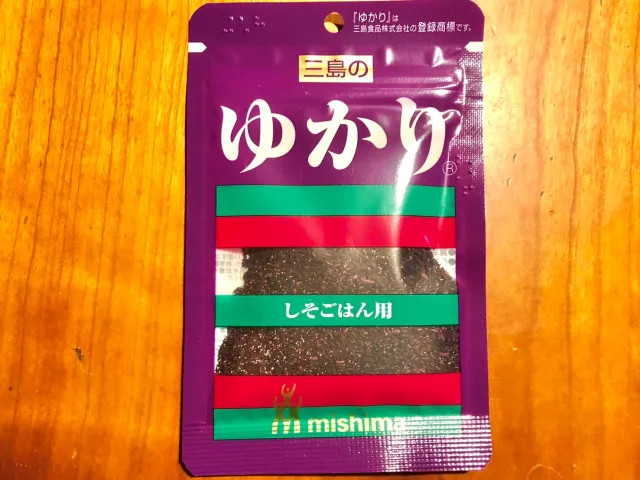
These are also pretty salty, and after our experience with the seaweed, we guessed they would similarly draw out the saltiness of the bread.
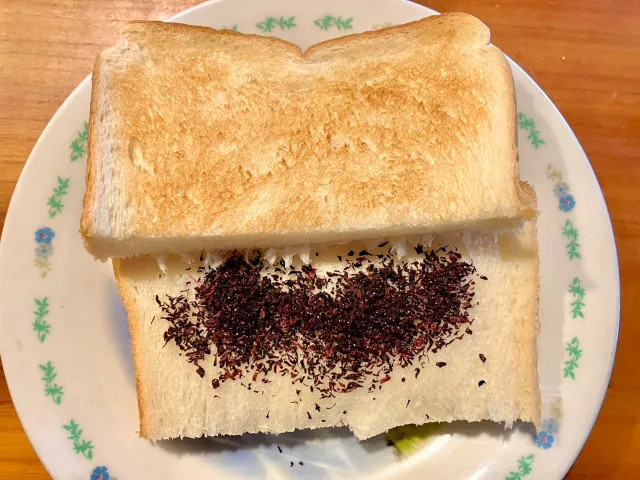
But to our surprise, the pungent flavor of the perilla really stood out! It paired really well with the mild sweetness of the bread, which made it more delicious than we expected. The bread also served to neutralize the saltiness of the perilla, so this was a surprisingly good topping for toast.
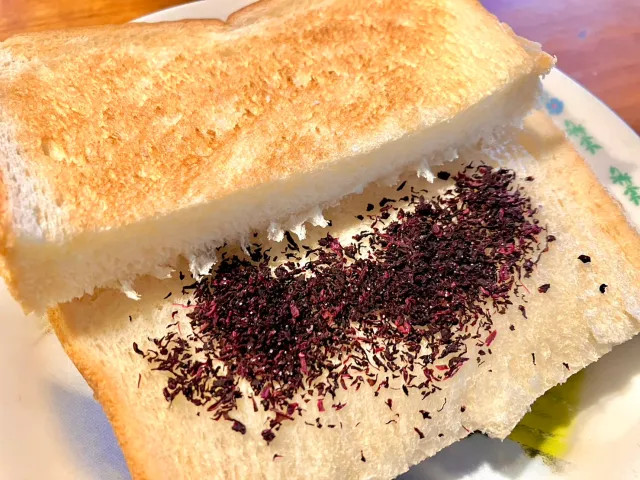
Perilla flakes are also great in potato salad, so it could just be that they’re an excellent accompaniment to any kind of carbohydrate. We took note of this for future experiments.
Next we tried salmon flakes.
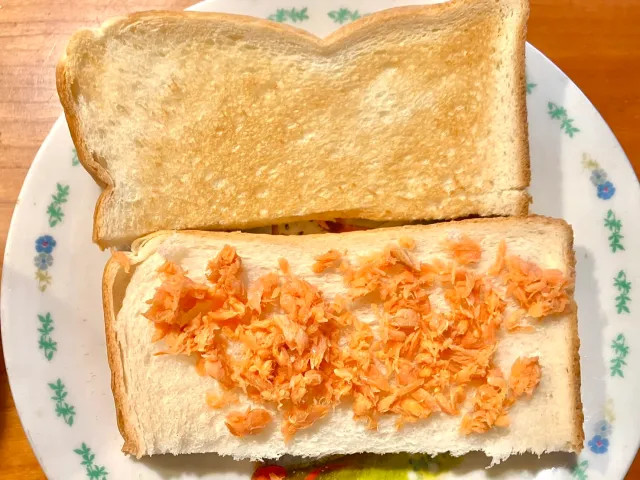
Unlike the first three toppings we tried, which had very strong flavors, upon tasting our salmon flake sandwich, we felt that the salmon flavor was just about as strong as the bread’s, so it offered a good balance. The mild sweetness and the umami of the salmon flakes drew out the flavor of bread, which made this an excellent pair.
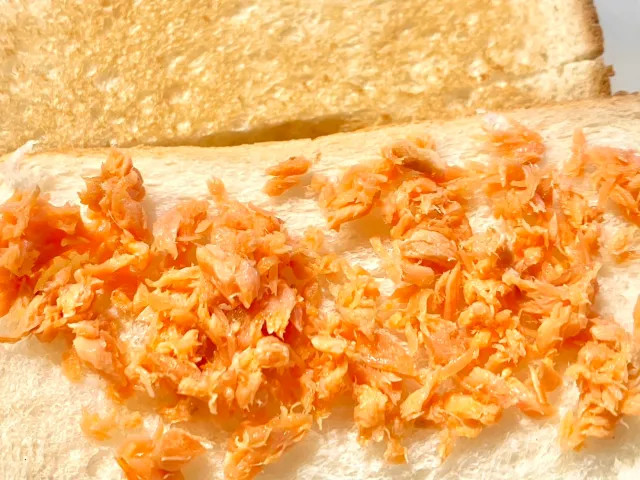
Like the seaweed flakes, there’s a bit of danger of spillage, so we might even recommend melting some cheese on top of the flakes to keep them in place. No doubt that would be absolutely delicious.
Last up on our taste test was the seaweed broiled in sweetened soy sauce. When we spread it over the toast, it looked exactly like jam, so it certainly looked like the most appropriate topping.
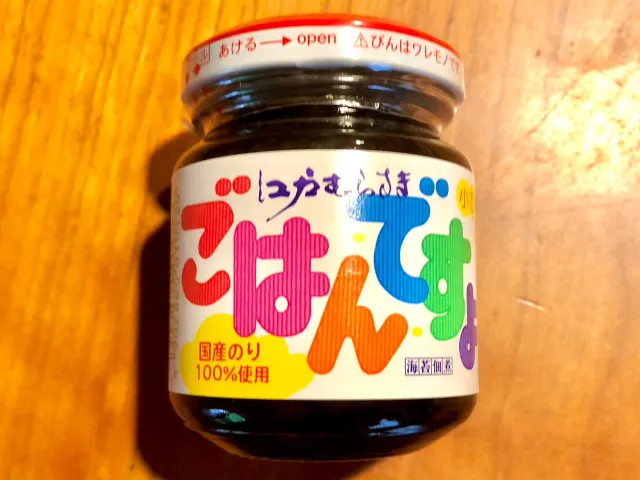
Thought it was a bit darker than most of what we would commonly put on toast, the flavor was pretty good. It managed to add a bit of sweetness to the simple flavors of the bread and offered the same balance it provides when added to rice. Among all the ones we tried, it was a good contender for best, though it was a hard call.
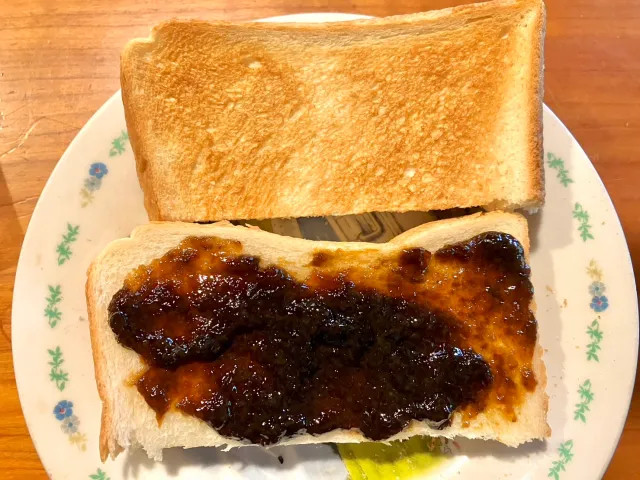
In the end we came to the conclusion that, if it tastes good on rice, it’ll probably taste good on bread too. Though from a practicality standpoint some of the options weren’t really great for a toast sandwich, since they had a tendency to crumble, they all tasted much better than we expected, without any weirdness or flavor quirks.
If we had to pick one to oust, it might be the salted salmon roe, since it was just kind of okay. But we still happily ate it, so we wouldn’t be mad about trying it again. In any case, the next time we’re out of jam and butter, or our fancy sweet red bean butter sheets, we now know we can turn to one of these delicious options and won’t worry about what’s for breakfast.
Images © SoraNews24
● Want to hear about SoraNews24’s latest articles as soon as they’re published? Follow us on Facebook and Twitter!
Credit:

0 comments: